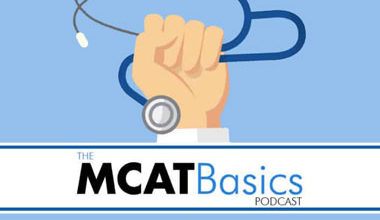Dr. Luke Maxfield joins us to discuss his experience in osteopathic medicine, the differences between an MD and a DO, and Step 1 going P/F.
Dr. Maxfield graduated from the Lake Erie College of Osteopathic Medicine and is currently a dermatology resident. He is passionate about dermatology and tropical medicine and has served as an author and editor for board preparation courses.
Differences between DOs and MDs
MDs are trained in allopathic medicine which has a strong focus on treating specific conditions with medications and diagnosis using tests and procedures.
DOs, on the other hand, are trained in osteopathic medicine which places emphasis on whole-body healing, with or without traditional medication. DOs have a more holistic approach and are also trained in osteopathic manual medicine (OMM) or osteopathic manipulation. Much of the training for DO in the first 2 years is hands-on, while the first 2 years of medical school is purely academic for an MD, giving the DO a unique academic experience and allowing them to become comfortable with patients early in their academic experience. In practice, however, the differences between MDs and DOs are often subtle, if at all present.
OMM (Osteopathic Manipulation)
Osteopathic medicine was started by an MD in 1892. It is premised on the somatic relationship between your organs and the structure of the body, and the postulation that your bones can cause problems in your muscles and the rest of your body.
OMMs are manipulations that target the structure of the body to influence an outcome in another part of the body. The maneuvers used by DOs include fascial release and effleurage, and are similar to those used by a chiropractor. Dr. Maxfield describes the techniques as ranging “anywhere from massage to chiropractics”.
The Implications of USMLE Step 1 Exam Going Pass/Fail
The decision to move away from grades to pass/fail results was likely well-intentioned, and intended to alleviate some of the pressure off the initial tests. However, this pressure has inadvertently been redirected elsewhere.
For many students looking at residency programs, the “anti-grade” could make them feel cheated of the opportunity to use a strong board score to reflect their capacity and work ethic. Pressure for a good board score now falls to the USMLE 2 alone. Residency programs will then place more value on other methods of screening students, like letters of recommendation. The effectiveness of these letters is often based on the esteem your medical school carries; a factor that has little bearing on the student’s abilities. Pressure is also likely to be shifted to the MCAT, which makes going to a good medical school all the more important.
In the absence of the Step 1 score, more emphasis will be placed on your relationships with people in the community and the esteem of your medical school.
Deciding between DO and MD
DOs and MDs get much of the same training. The main difference is the extra training for DOs that focuses on how the structure of the body affects the body’s overall health. For students who want an osteopathic skill set, DO may be the right choice. Historically, DO is more holistic in its approach. Western medicine, though reactively, is also moving towards being more holistic.
